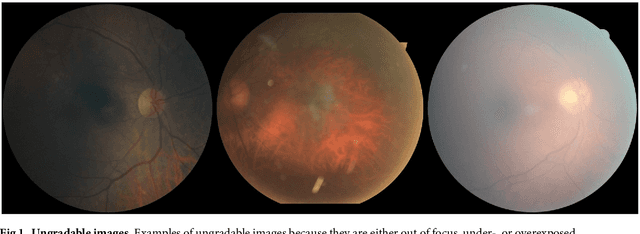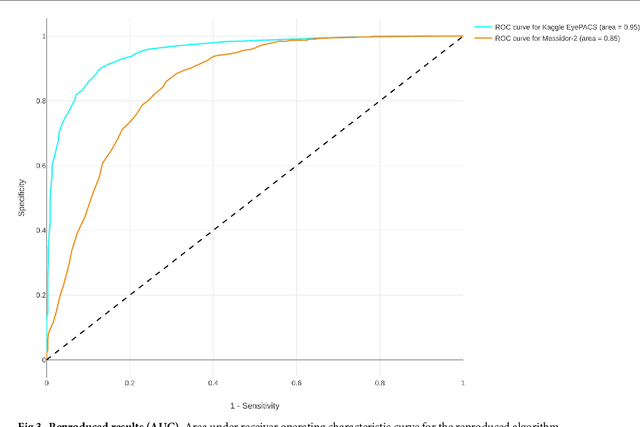Replication study: Development and validation of deep learning algorithm for detection of diabetic retinopathy in retinal fundus photographs
Paper and Code
Aug 30, 2018



Replication studies are essential for validation of new methods, and are crucial to maintain the high standards of scientific publications, and to use the results in practice. We have attempted to replicate the main method in 'Development and validation of a deep learning algorithm for detection of diabetic retinopathy in retinal fundus photographs' published in JAMA 2016; 316(22). We re-implemented the method since the source code is not available, and we used publicly available data sets. The original study used non-public fundus images from EyePACS and three hospitals in India for training. We used a different EyePACS data set from Kaggle. The original study used the benchmark data set Messidor-2 to evaluate the algorithm's performance. We used the same data set. In the original study, ophthalmologists re-graded all images for diabetic retinopathy, macular edema, and image gradability. There was one diabetic retinopathy grade per image for our data sets, and we assessed image gradability ourselves. Hyper-parameter settings were not described in the original study. But some of these were later published. We were not able to replicate the original study. Our algorithm's area under the receiver operating curve (AUC) of 0.94 on the Kaggle EyePACS test set and 0.80 on Messidor-2 did not come close to the reported AUC of 0.99 in the original study. This may be caused by the use of a single grade per image, different data, or different not described hyper-parameter settings. This study shows the challenges of replicating deep learning, and the need for more replication studies to validate deep learning methods, especially for medical image analysis. Our source code and instructions are available at: https://github.com/mikevoets/jama16-retina-replication
 Add to Chrome
Add to Chrome Add to Firefox
Add to Firefox Add to Edge
Add to Edge